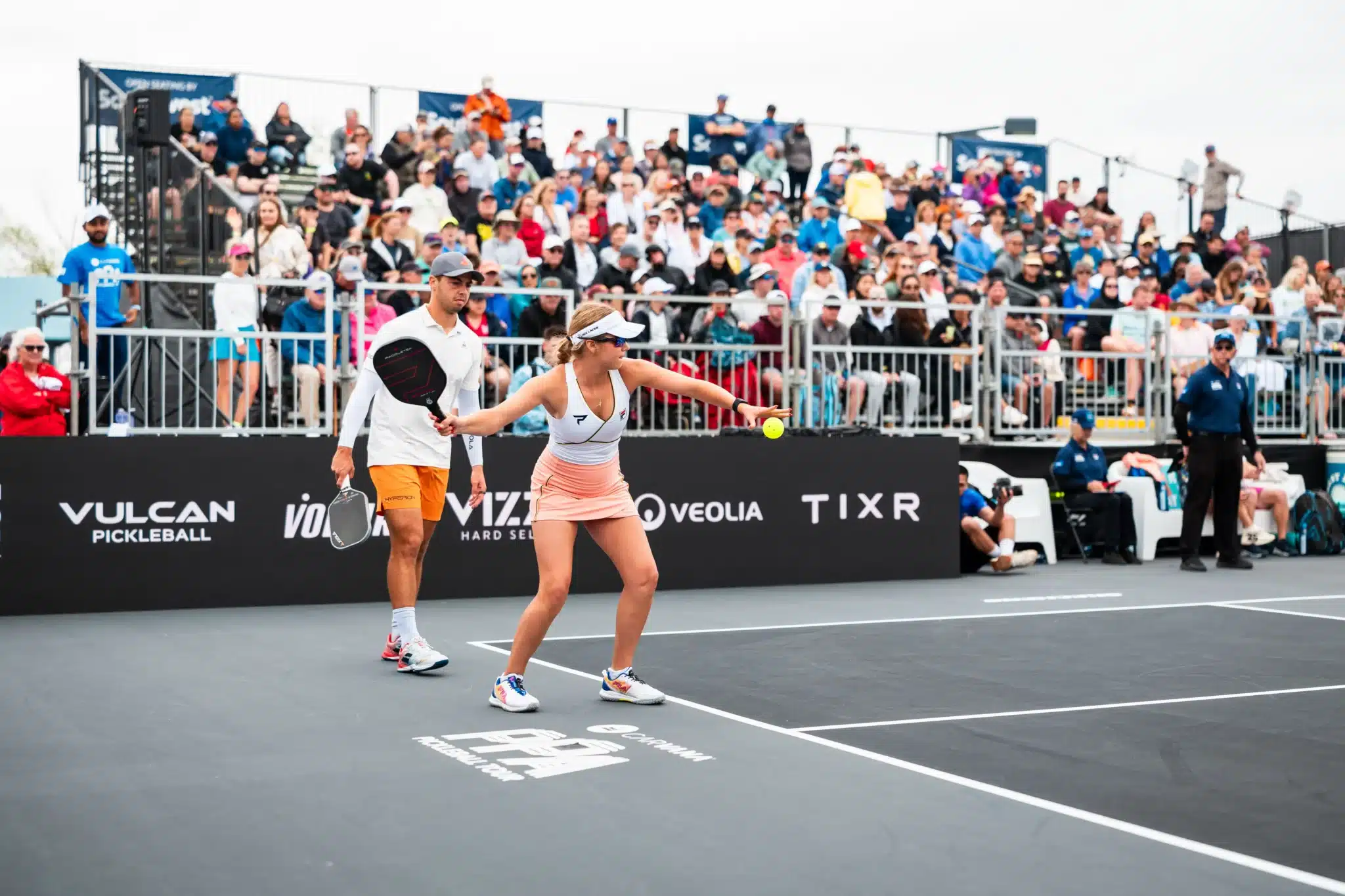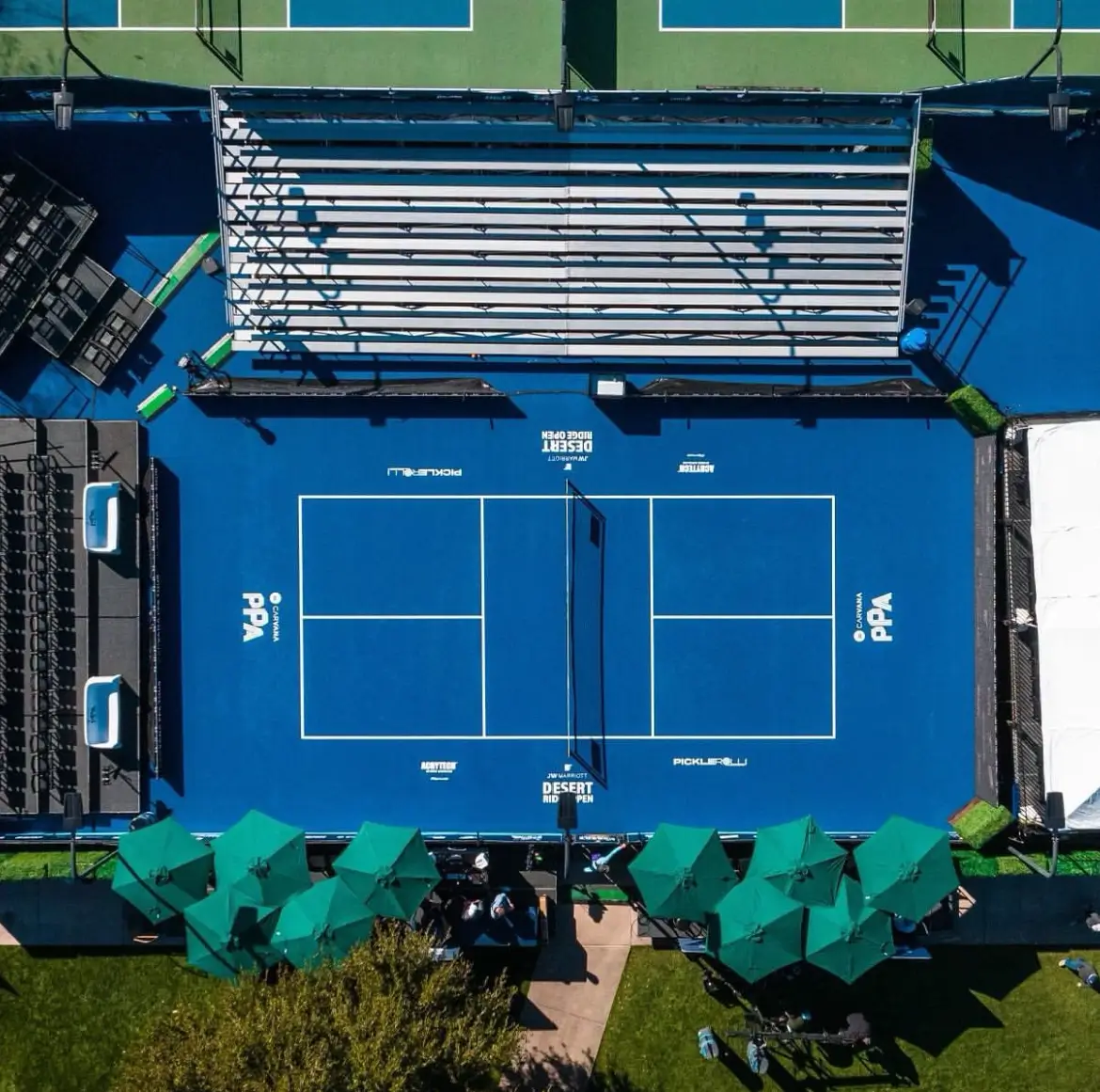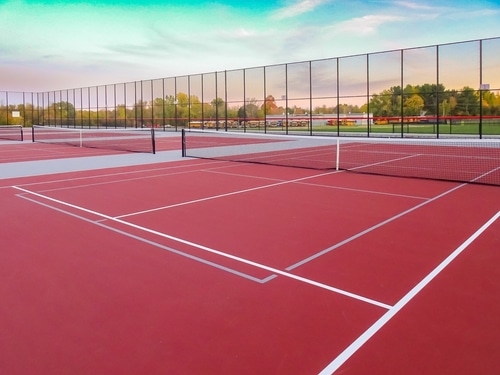What is Stacking in Pickleball?
| March 25, 2024

If you’ve watched the professionals play, oftentimes you’ll hear the announcers talk about a team “stacking.”
What does that mean?
Simply, “stacking” means it’s stacking the court to achieve the best strategic position for the team.
It’s a common strategy used at all levels of play to create the biggest advantage and help hide weaknesses. It’s also a common strategy if a team is made up of a left-handed and a right-handed player.
Read on for more specific information about stacking.
How to stack
Before we get into the benefits and the disadvantages of stacking, it’s important to know how to do it.
The first thing you want to do is identify either the stronger player, more agile, or more dominant player. If that player is right-handed, put him or her on the left side of the court. If there is a left-handed player, a player who is less agile, less skilled or even less confident, it’s probably not a bad idea to put him or her on the right side of the court. If there’s a player who feels as if he or she should take a majority of the third shots, it’s also a pretty good idea to stack.
Now, just because a player is on the right side, doesn’t necessarily mean the player is weaker. It’s not uncommon to have a capable, strong player on the right, essentially in that position to help “set-up” their partner for better angles or shots. At the highest level, a true “right-side player” is like a basketball player who excels in assists, always looking to get their teammate involved first instead of trying to score.
Once you’ve identified which side the players should start on, start the game in standard formation, obviously with the right-side player serving first.
Now you’re ready to execute the stack. When the right-side player serves and that team scores a point, the left-sided player will remain on the left side of the court with the right-side player serving from the left and then sliding back over to the right.
Remember, as long as the correct server and the correct receiver are in the right spot, the other players can position themselves wherever they want. That means, the left-side player will always stand to the left of the right-side player, no matter which side the ball is served from.
This means the left-side player will always remain on the left-side of the court, leaving that forehand in the middle and allowing that player to be the more aggressive of the two.
When the team has zero or an even number of points, the right-side player will serve from the right. When the team has an odd number of points, the left-side player will also serve from the right. Once the serve is executed, players can stack the court and move to wherever they like.
And when a stacking team is receiving, the same rules apply. When the team has an odd number of points, the right-side player will have to return the ball from the left side of the court, but after the return of serve, the right-side player will then take the position at the non-volley zone line on the right side and the left-sided player will slide back to the left.
When the team that is stacking has an even number of points and the right-side player is returning from the right side, it will look like traditional pickleball and the players will not switch sides.
While it may seem confusing, just remember this: If you are stacking and start the game as the left-side player, every time your team has an odd number of points, you will either be serving or receiving from the right side. When your team has an even number of points, you will be receiving or serving from the traditional left side.
At the lower levels of play, it’s quite common that your opponents will be confused about your set-up. That really shouldn’t be your concern. As long as the correct server and receiver are in the appropriate places, the other player on the team can do or stand, or sit wherever they like.
Why stack?
Stacking is all about the positioning of players in a doubles match. It involves putting players on the same side of the court rather than opposite sides as is generally standard in doubles play.
The purpose, particularly when one player is left-handed and another is right-handed is to artificially manipulate the court so both players have the advantage of their forehand covering the middle of the court.
That helps create different, usually easier angles and shot options that can be a huge benefit during play, making it challenging for opponents to predict and return shots effectively.
Disadvantages of Stacking
The main one is communication. Communication is the key. If you don’t have a good understanding where your teammate will be, or which player will hit certain shots, it can lead to frustration or simply a quick defeat. Players must coordinate their movements and shot selection to make the stack effective.
Stacking can be a problem sometimes because it essentially eliminates versatility and flexibility. If players are forced into positions where they are less comfortable, it could be an issue. Make sure both players are most comfortable on their side of the court if you decide to stack. If a player isn’t comfortable on just one side, consider not stacking and playing a traditional set up.
At the higher levels, predictability is common, so a team can figure out early and adjust their play to take advantage of a stacking team. Once a team understands that one player consistently plays a bulk of the shots, they can anticipate and plan more easily.
Difficulty in getting to the right spot when receiving the serve can also be a problem for a team that’s stacking. If players aren’t ready or used to the smooth transition of switching sides on the court at the correct time, it can lead to confusion and errors.
Stacking relies on player skill and understanding what each player is contributing to the team. If one player is much better than the other, it may be a good idea to stack, but then again, it may be a burden on the weaker player to get into the right position.
Stacking can be a great strategy, but make sure to go over with your partner the advantages and disadvantages to using this pickleball technique.
Once you and your partner understand what you each do best, stacking can definitely use your strengths and help make up for any weaknesses.
(Learn another popular pickleball term “the erne” and the advantages and disadvantages to performing it)





